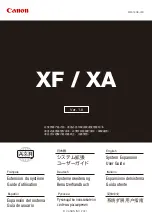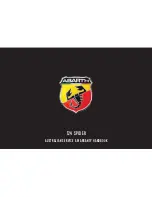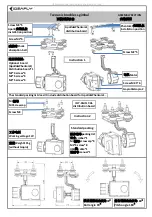
Engine Maintenance
94
Changing the Antifreeze
1. Run the engine until it is up to operating
temperature. Stop the unit.
2. Open the drain cock and completely drain
coolant. Observe coolant color. If the coolant
is dirty, proceed with a, b, and c. Otherwise go
to step 3.
a. Run clear water into radiator and allow it
to drain out of the drain cock until it is
clear.
b. Close the drain cock and install a
commercially available radiator and block
flushing agent, and operate the unit in
accordance with instructions of the
flushing agent manufacturer.
c. Open the drain cock to drain water and
flushing solution.
3. Run clear water into the radiator, and allow it
to drain out of the drain cock until it is clear.
When water has finished draining, close drain
cock.
4. Inspect all the hoses for deterioration and the
hose clamp tightness. Replace if necessary.
5. Loosen the water pump belt. Check the water
pump bearing for looseness.
6. Inspect the radiator cap. Replace the cap if the
gasket shows any signs of deterioration.
7. Mix one gallon of the appropriate permanent
type antifreeze concentrate and one gallon
clean water in a container to make a 50/50
mixture. (Do not add antifreeze and then add
water to the unit. This procedure may not give
a true 50/50 mixture because the exact cooling
system capacity may not always be known).
8. Refill the radiator with the 50/50 mixture.
Bleeding Air from the Cooling
System
Often when a self powered truck unit cooling
system is refilled, air is trapped in the engine
block and/or under the thermostat. Use the
following procedure to bleed air out of the block
and the cooling system:
NOTE: If an engine runs with air trapped in the
block, the engine may be damaged. The high
water temperature switch may not protect an
engine that has air trapped in the block, because
the high water temperature switch is designed to
protect an engine from overheating due to
failures in the cooling system and the loss of
coolant.
1. Remove the bleeder set screw from the front
of the engine thermostat housing. In some
applications it may be easier to remove the
thermostat and housing.
2. Slowly pour the coolant into the system until
you see coolant coming out of the bleeder set
screw fitting or coming up to the top of the
opening for the thermostat in the water pump.
3. Reinstall the bleeder set screw or reinstall the
thermostat and housing.
CAUTION: Avoid direct contact with hot
coolant.
CAUTION: Avoid direct contact with hot
coolant.
CAUTION: Do not start the engine
without bleeding the air out of the block.
1.
Bleeder Set Screw
Figure 163: Remove Bleeder Set Screw
1
Summary of Contents for UT-1200
Page 10: ...Table of Contents 10...
Page 20: ...Safety Precautions 20...
Page 76: ...Operating Instructions for Premium HMI Control Panel 76...
Page 88: ...Electrical Maintenance 88...
Page 98: ...Engine Maintenance 98 Figure 167 Fuel Components...
Page 142: ...Refrigeration Service Procedures 142...
Page 148: ...Clutch Maintenance 148...
Page 150: ...Structural Maintenance 150...
Page 162: ...Wiring and Schematic Diagrams Index 162...
Page 163: ...163 Schematic Diagram Page 1 of 2...
Page 164: ...164 Schematic Diagram Page 2 of 2...
Page 165: ...165 Wiring Diagram Page 1 of 5...
Page 166: ...166 Wiring Diagram Page 2 of 5...
Page 167: ...167 Wiring Diagram Page 3 of 5...
Page 168: ...168 Wiring Diagram Page 4 of 5...
Page 169: ...169 Wiring Diagram Page 5 of 5...
















































